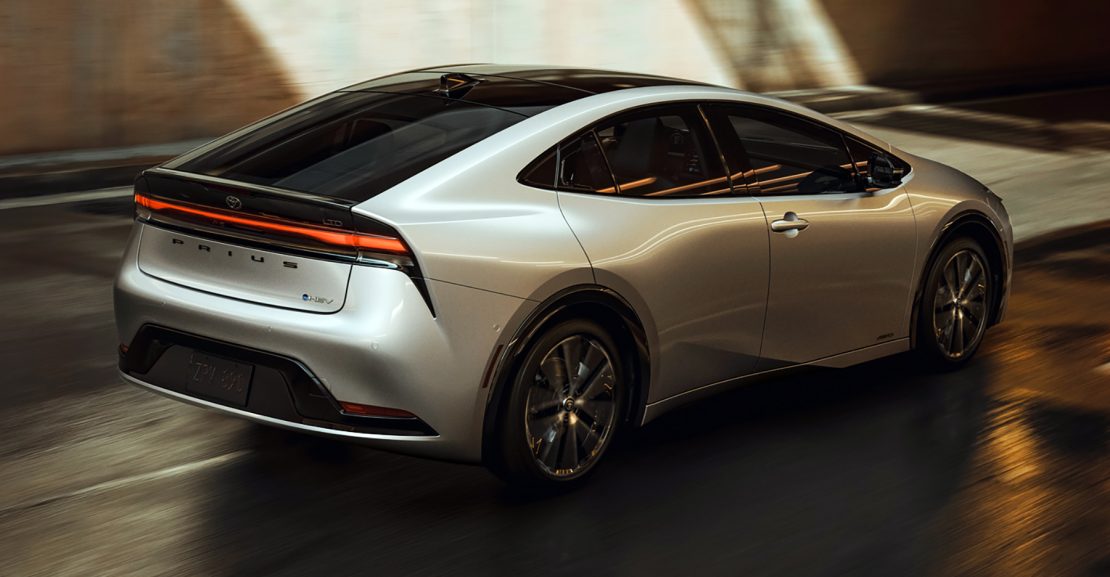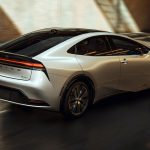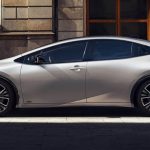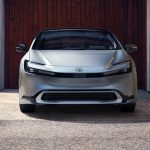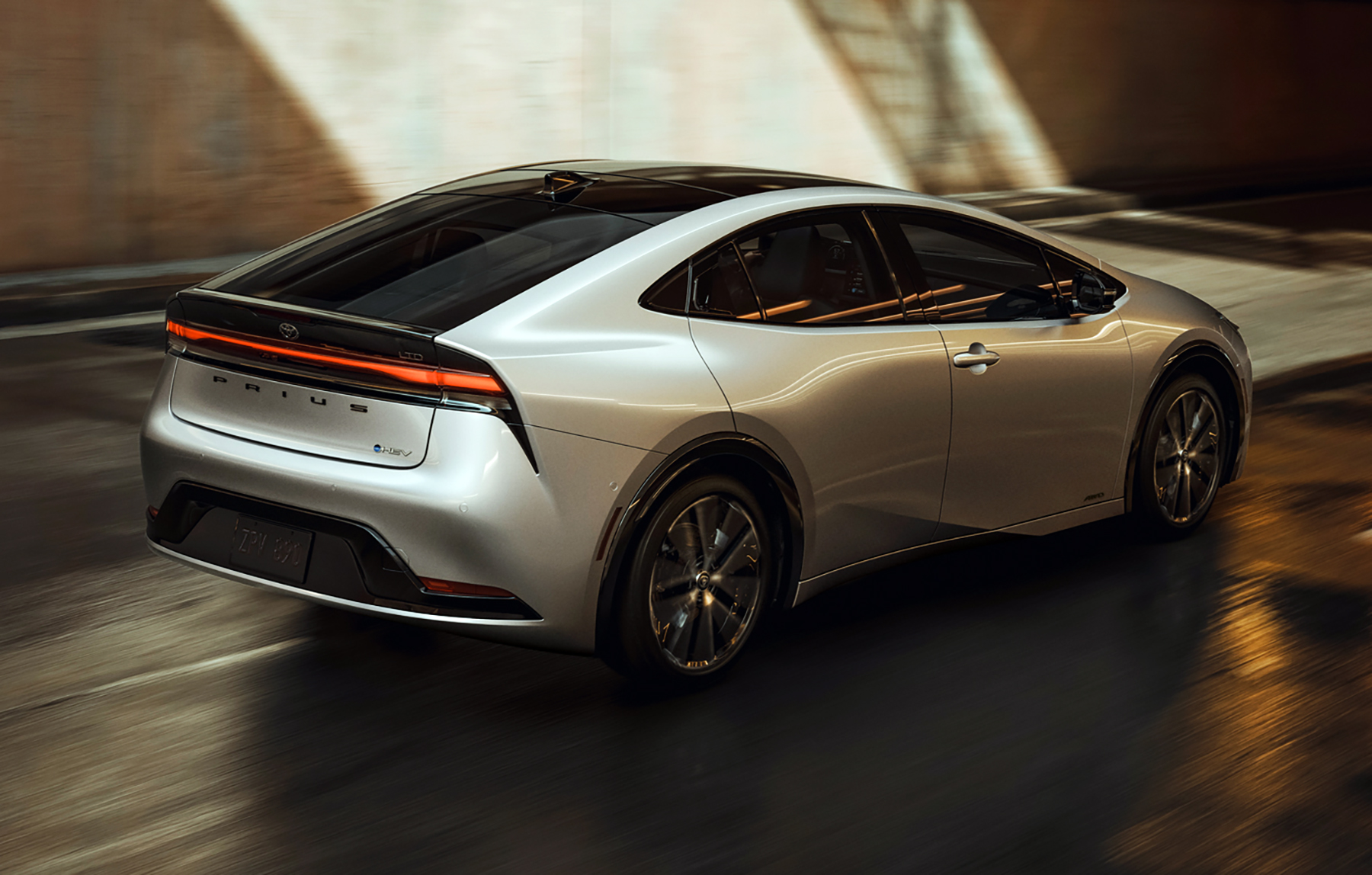

Revealed at a private event in advance of the 2022 Los Angeles Auto Show, Toyota officially unveiled the next version of its Prius gas/electric and Prius Prime plug-in hybrids. These fifth-generation hatchbacks get a sleek new look, a revised battery pack, and up-to-date safety and connectivity tech. The company also claims that the standard Prius hybrid will achieve 57 mpg in combined city/highway driving.
More from the Los Angeles Auto Show
Count us among the chorus of pundits impressed with the new Prius exterior design. It retains the same basic wedge shape as the two preceding generations, but most of the sharp edges have been smoothed out, which results in an appropriately futuristic look. The car is 2 inches lower, an inch wider, and an inch longer than its predecessor.
The sleek new body rests atop the second generation of Toyotas New Global Architecture (TNGA). This time around, the company is putting an emphasis on performance. Front- and all-wheel drive (AWD) options will return to the standard Prius hybrid while the Prime remains front-drive only. All see their four-cylinder gas engines increased in displacement to 2.0 liters from 1.8. The redesigned battery pack switches to lithium-ion technology from the previous nickel-metal hydride, resulting in a 15 percent increase to output. Total system horsepower ratings are 194 and 196, with estimated 0-60-mph acceleration times of 7.2 and 7.0 seconds for standard front- and AWD models, respectively.
The Prius Prime gets even more juice with combined system output of 220 horsepower, leading to a project 0-60 time of 6.6 seconds. Despite having more power Toyota claims the Prime is capable of around 38 miles of all-electric travel, a significant bump over the 25 miles of the last-generation plug-in.
Inside, instruments and controls are a hybrid of Toyotas fully electric bZ4X SUV and other passenger vehicles like the Highlander and Sienna. The Prius hybrids lineup consists of LE, XLE, and Limited trims while the Prime adopts SE, XSE, and XSE Premium grades. The standard tablet-style infotainment screen is 8 inches on the LE/SE and XLE/XSE. Optional on the XLE/XSE and standard on the Limited/XSE Premium is an ultrawide 12.3-inch panel. Full smartphone integration is included along with six USB Type-C power points.
The XLE/XSE include Toyotas SofTex faux leather upholstery, heated front seats, power drivers seat, rain-sensing wipers, wireless device charging, and front- and rear-obstacle detection. Limited/XSE Premium models add a JBL-brand audio system, fixed glass roof, heated steering wheel, ventilated front seats, and a digital key that uses a compatible smartphone to lock, unlock, and start the vehicle.
Blind-spot alert with rear cross-traffic detection; lane-departure warning; adaptive radar cruise control; and traffic-sign detection are standard. New is something Toyota calls Proactive Driving Assist, which employs the cars camera and radar systems to provide limited autonomous capability, including braking into curves and braking/steering to help maintain distance between vehicles, pedestrians, and/or cyclists. Limited/XSE Premium models are available with a surround-view camera system and hands-free parallel parking.
The 2023 Toyota Prius hybrid is slated to arrive at dealers in early-calendar 23 with the Prime plug-in following shortly afterward. Full pricing and fuel-economy estimates will be available closer to that time.
CG Says:
We’ve always been fans of the practical, affordable, and very efficient Prius. That said, it’s a little less clear to us these days how the Prius fits in the Toyota Lineup. Both the Corolla and the Camry can he had in hybrid trim, and the former is about as frugal with gas as is the Prius. But marketing is Toyota’s problem. If the new, much better looking, Prius is as well sorted as previous editions, count us in.
Listen to the Car Stuff Podcast
2023 Toyota Prius Gallery
Click below for enlarged images.

